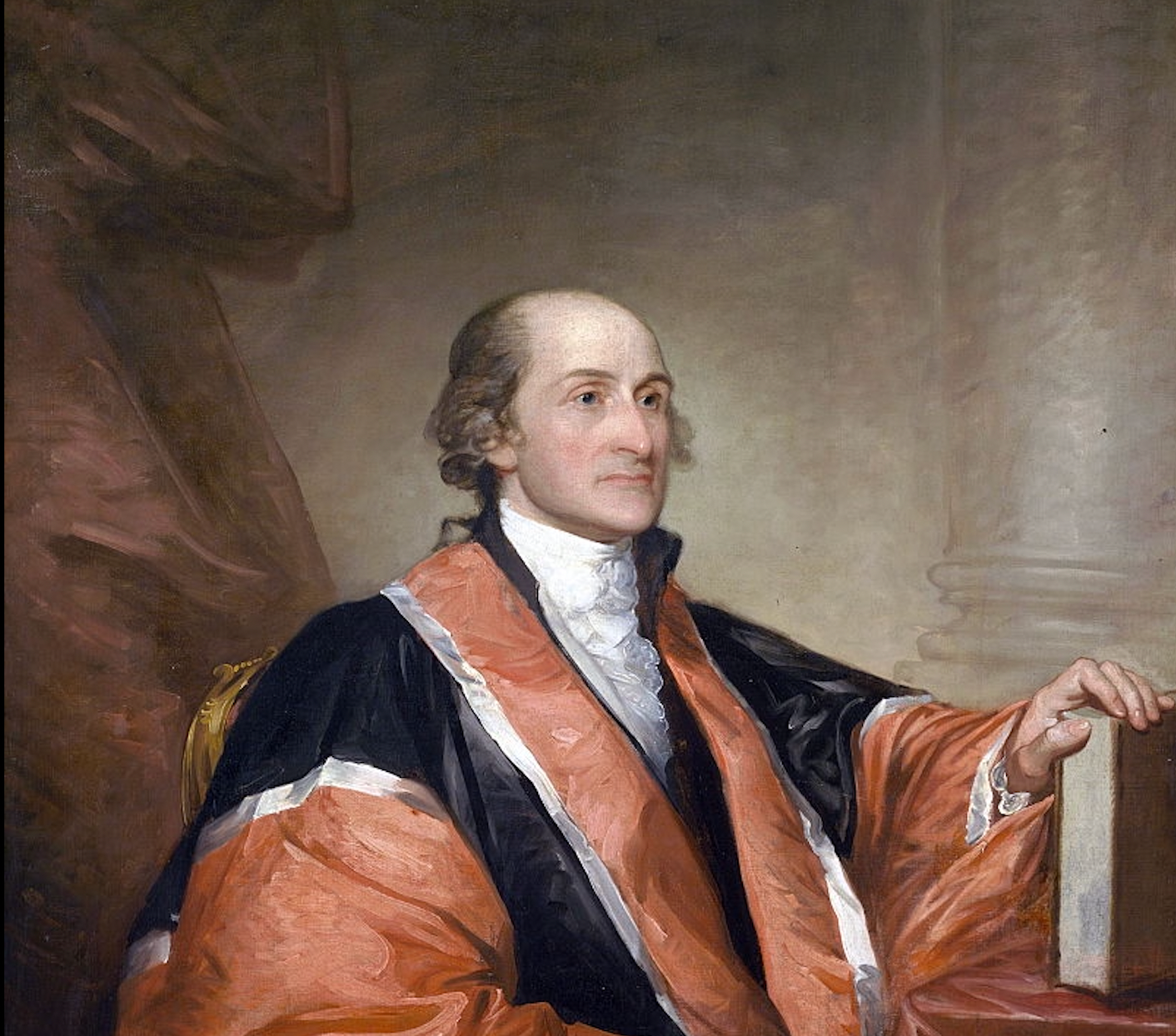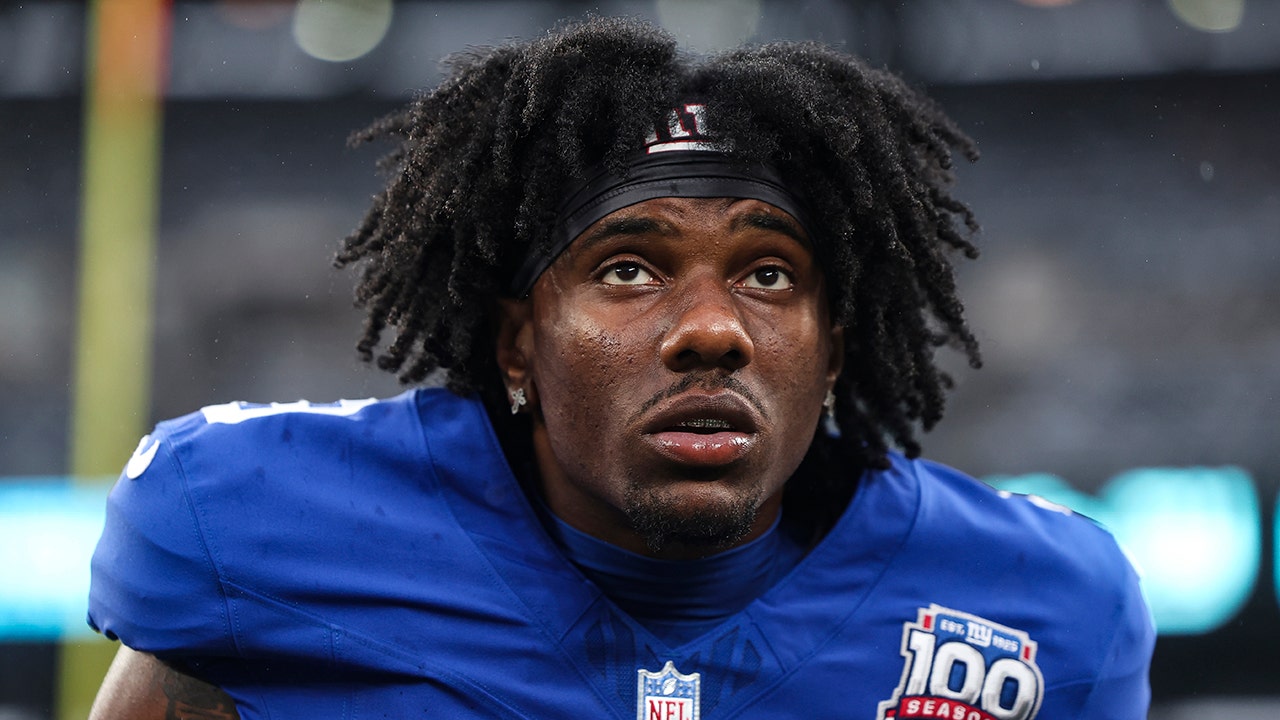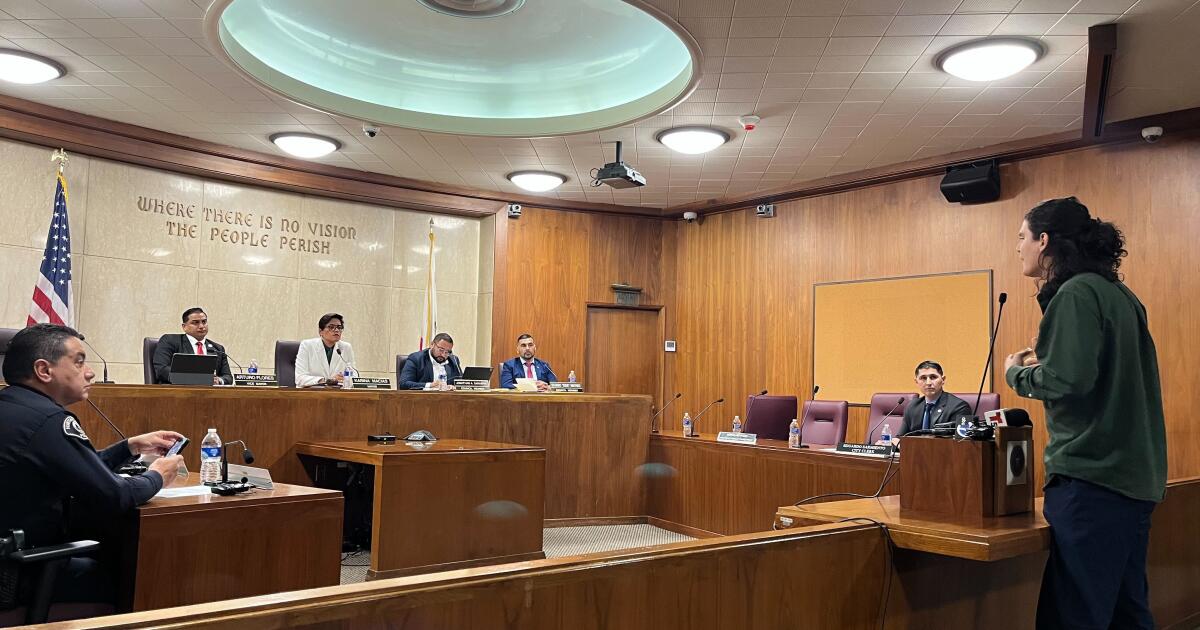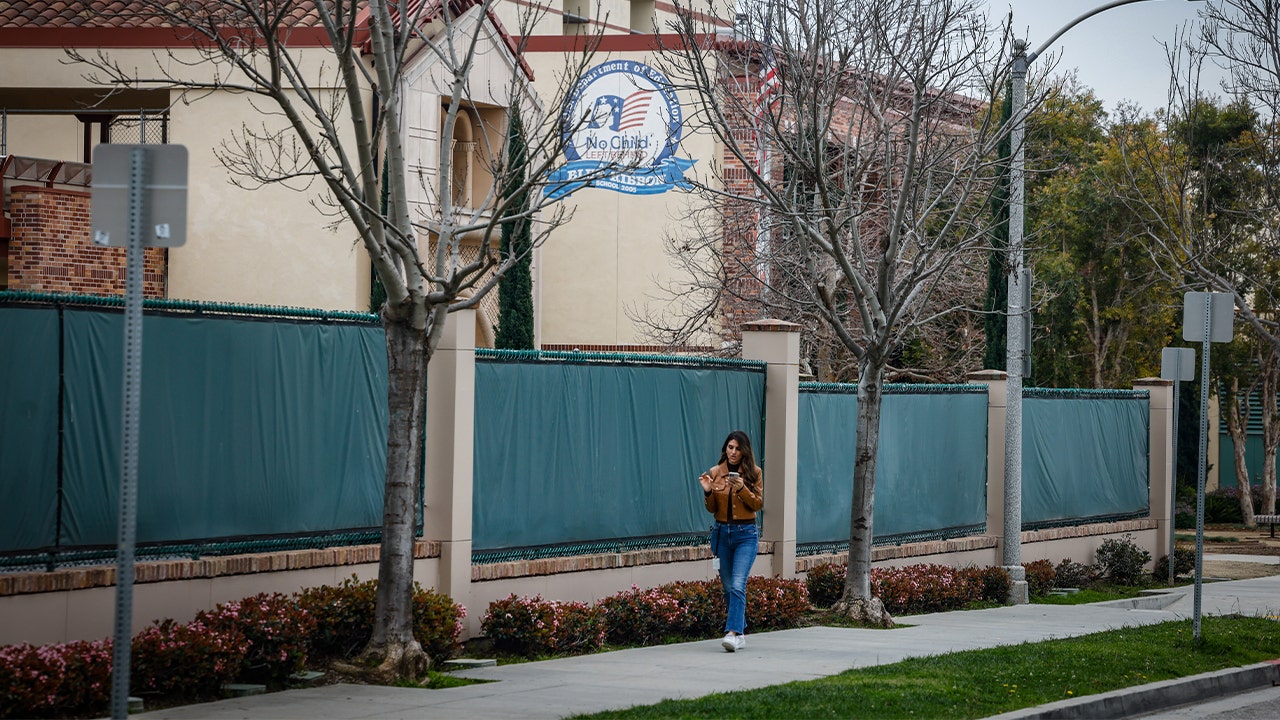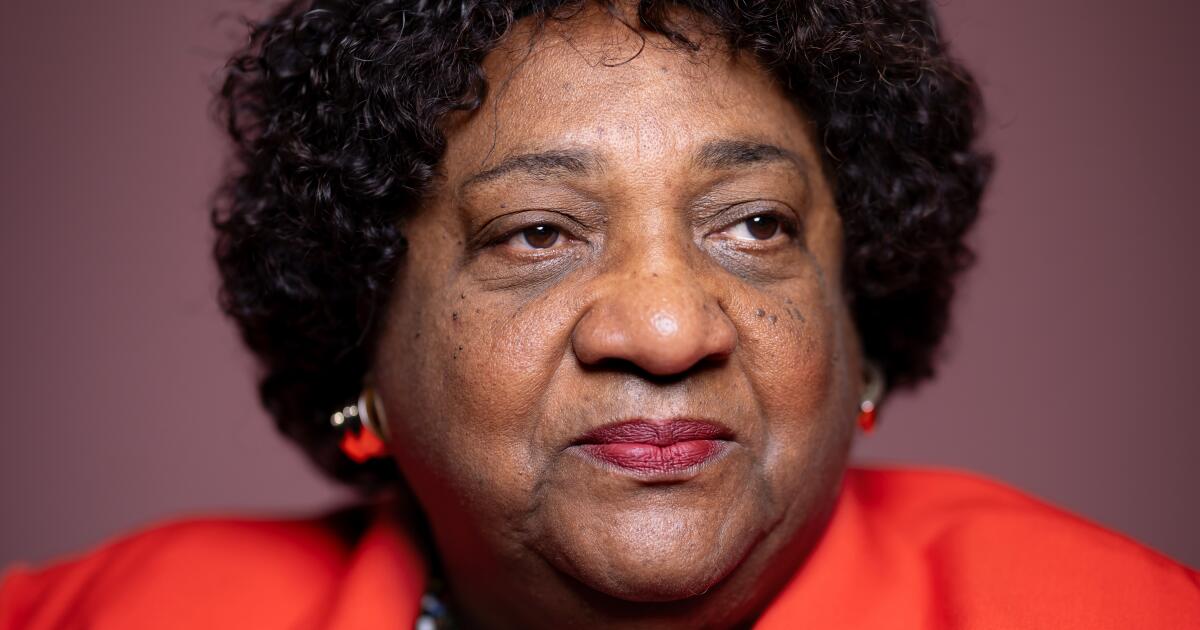Gilbert Stuart, who created portraits of key figures of the American Revolution and early American history, died on this day in history, July 9, 1828.
Gilbert's distinctive portrait style remains the way modern Americans view many of the Founding Fathers and other central figures from the nation's formative years, the official George Washington at Mount Vernon website noted.
“Stuart's most iconic portrait, the Athenaeum portrait of George Washington, serves as the basis for the depiction of Washington on the US one-dollar bill,” the source said.
ON THIS DAY IN HISTORY, JULY 8, 1918, AMERICAN RED CROSS DRIVER ERNEST HEMINGWAY IS WOUNDED IN WORLD WAR I
Stuart was born on December 3, 1755 in Kingstown, Rhode Island to Gilbert Stuart Sr. and Elizabeth Anthony.
His father, a Scottish millwright, emigrated to New England to establish a tobacco factory, according to Mount Vernon.
As a child, Stuart spent his early childhood years in the mill house.
Portrait of John Jay (1745-1829), American statesman, patriot, and diplomat, one of the Founding Fathers and the first Chief Justice of the United States Supreme Court, by Gilbert Stuart. Painted by the American painter Stuart (1755-1828). (Universal Historical Archive/Universal Image Group via Getty Images)
After his father's business failed, the family moved to Newport, Rhode Island, to a property his mother had inherited, the source said.
While living in Newport, Stuart developed a love for music and drawing, the source said.
Scottish portrait painter Cosmo Alexander gave Stuart his early training in painting, and Stuart accompanied Alexander to Scotland in 1771, returning home after the elder artist's death, according to the National Gallery of Art.
In 1775, on the eve of the American Revolution, Stuart traveled to London, where he worked for five years (1777–1782) as an assistant to the Anglo-American painter Benjamin West.
In 1793, Stuart returned to the United States.
Stuart exhibited his work at the Royal Academy between 1777 and 1785, the same source says.
The success of Stuart's “The Skater,” which he painted in 1782, allowed him to set up his own business as a portrait painter, the National Gallery of Art said.
In 1786, he married Charlotte Coates and the following year they moved to Dublin, Ireland.
There, Stuart painted portraits of the ruling Protestant minority for more than five years, according to the same source.
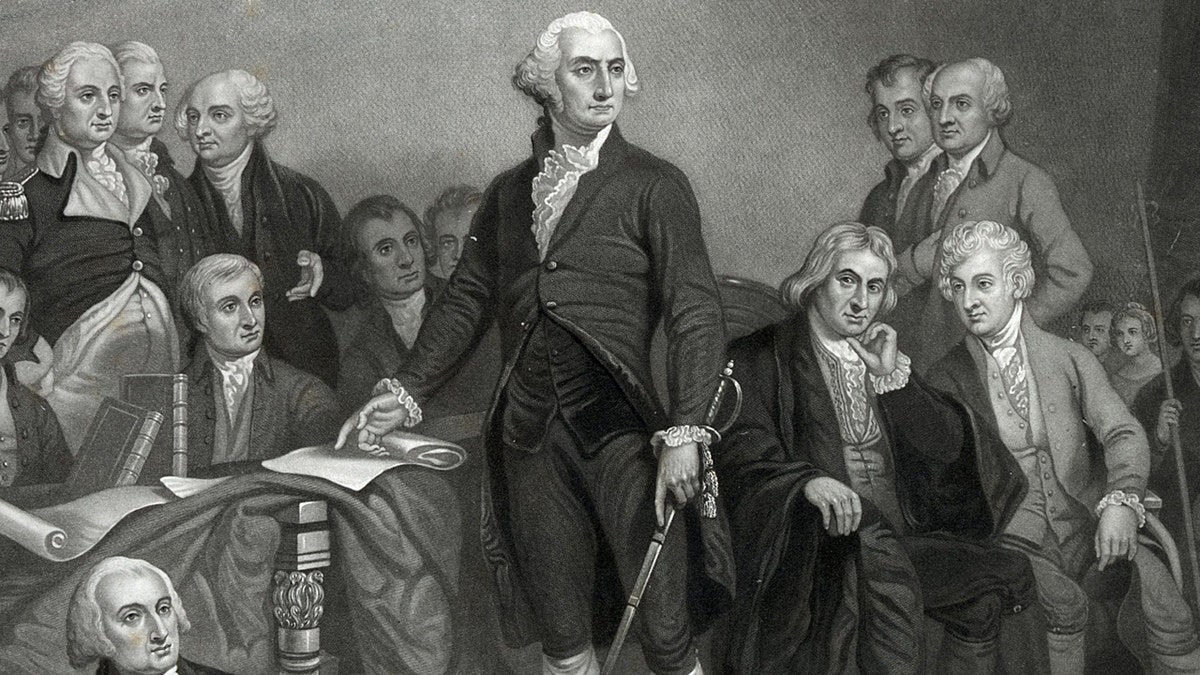
George Washington delivers his inaugural address at New York's Old City Hall, before members of Congress. (Universal Historical Archive/UIG via Getty Images)
Then, in 1793, Stuart returned to the United States.
“After the Americans defeated the British in the Revolutionary War, Stuart decided he would return to the newly formed United States and find a way to paint its most famous hero, George Washington,” the White House Historical Association said.
He believed that if he could paint Washington, according to the same source, then “he would make a fortune.”
Stuart landed in New York and interacted with several high-profile clients.
In 1794, he painted a portrait of Supreme Court Chief Justice John Jay, who in turn introduced him to other related clients, the White House Historical Association reported.
In 1795, Stuart attempted to secure a session with President George Washington.
In 1795, Stuart attempted to secure a session with President George Washington.
With a letter of introduction from Judge John Jay, he was successful, the same source added.
ON THIS DAY IN HISTORY, APRIL 30, 1789, GEORGE WASHINGTON WAS INAUGURATED AS THE FIRST PRESIDENT OF THE UNITED STATES.
Stuart left New York and went to Philadelphia to paint his first portrait of President Washington in 1795.
He did not like this portrait, claiming that he was too overwhelmed by the man himself to produce a better portrait, according to Mount Vernon.
“He repainted the portrait from memory to improve the piece, but was dissatisfied with the final product because it had not been painted from life,” the same source added.

Former President Donald Trump stands beneath a portrait of America’s first president, George Washington, at the White House in Washington, D.C. Painter Gilbert Stuart painted three copies of Lansdowne’s portrait of George Washington, shown above, and five portraits that were closely related to it. His most famous copy has hung in the East Room of the White House since 1800. Numerous other artists also painted copies. (BRENDAN SMIALOWSKI/AFP via Getty Images)
Stuart again had the opportunity to paint Washington in 1796.
This time he produced a full-length portrait commissioned by the Marquess of Lansdowne and Philadelphia socialite Anne Willing Bingham, who had requested that Washington sit for her, Mount Vernon said.
Martha Washington had also commissioned a matching portrait of her husband and herself, according to Mount Vernon.
This commission resulted in the most popular artistic depiction of George Washington, known as the Athenaeum portrait, according to the White House Historical Association.
Throughout his career, Stuart produced portraits of more than 1,000 people, including the first six presidents of the United States.
“Stuart never finished the original, but used it to make many replicas of the painting, including an 1805 version,” the source said.
“The original, unfinished painting was sold by Stuart's daughter to the Boston Athenaeum in 1831. In 1980, the Smithsonian's National Portrait Gallery and the Museum of Fine Arts, Boston, jointly purchased the painting.”
According to several reports, Washington's image from this portrait now appears on the United States one-dollar bill.
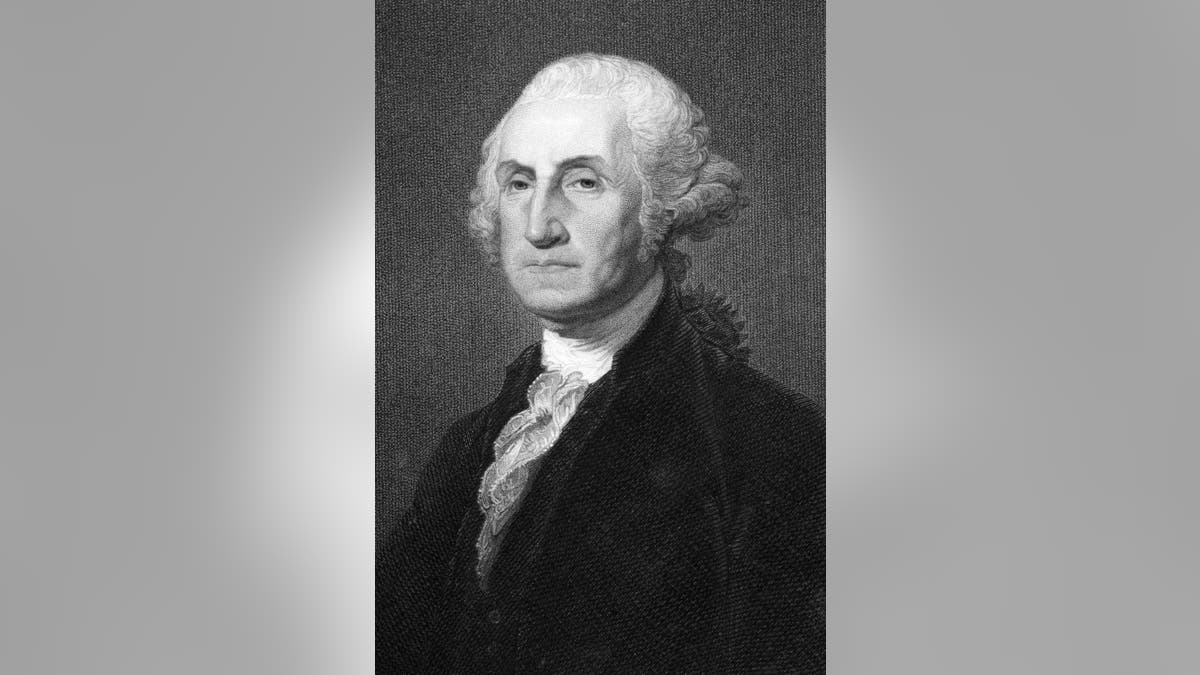
George Washington (1731-1799), in an 1837 engraving by W. Humphreys, based on a portrait by Gilbert Stuart. First president from 1789 to 1797 and commander of the Continental Army in the American Revolutionary War, 1775-1783. Considered the father of his country. Published in The Gallery Of Portraits with Memoirs, London Charles Knight, Ludgate Street. (iStock)
In 1802, Stuart moved his studio to Washington, D.C., where he was immensely popular in the nation's young capital and received a large number of commissions for portraits from the social and political elite, according to the National Gallery of Art.
Stuart painted Dolly Madison in 1804 when her husband James was serving as Secretary of State; the portrait is considered to exhibit “astonishing subtleties…and masterful transitions of tone,” according to the White House Historical Association.
For more lifestyle articles, visit www.foxnews.com/lifestyle
Mrs. Madison's portrait became part of the White House Collection in 1994.
Stuart's work can now be found in art museums throughout the United States and the United Kingdom.
Additionally, Stuart painted a portrait of President Thomas Jefferson in 1805 in Washington, D.C., at the beginning of Jefferson's second term, according to Colonial Williamsburg's official website.
Throughout his career, Stuart produced portraits of more than 1,000 people, including the first six presidents of the United States.
CLICK HERE TO SUBSCRIBE TO OUR LIFESTYLE NEWSLETTER
His work can now be found in art museums in the United States and the United Kingdom, most notably the Metropolitan Museum of Art in New York City, the National Gallery of Art in Washington, D.C., the National Portrait Gallery in London, and the Museum of Fine Arts in Boston, according to Gilbert Stuart's official website.
The Gilbert Stuart Museum, at his birthplace in Rhode Island, honors his legacy.
CLICK HERE TO GET THE FOX NEWS APP
Founded in 1930, the museum was created to honor the memory of Gilbert Stuart, maintain a museum dedicated to him and promote interest in the knowledge of his life and art, the Library of Congress says.
In 1966, the Gilbert Stuart Museum was designated a registered national monument.

